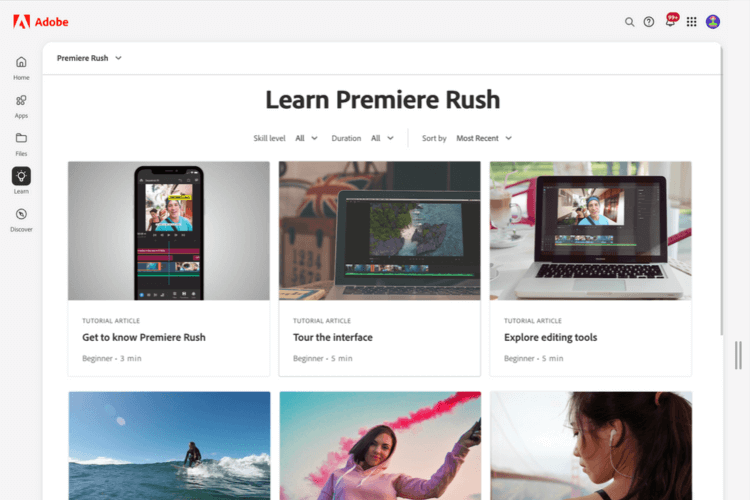Incorporating video content into science marketing is a highly effective strategy that can significantly boost engagement, conversion rates, and overall brand visibility. Video content can capture and hold viewers’ attention, allowing brands to convey complex information in a dynamic, easy-to-digest format. Studies have shown that including video on a landing page can increase conversion rates by more than 80%. Moreover, video marketing is pivotal to enhancing user comprehension, with 96% of marketers reporting that video helps customers better understand their products or services.
With its unparalleled ability to engage audiences, improve brand visibility, and drive tangible business results, the incorporation of video content has become an essential component of any successful science marketing campaign. However, starting a video marketing program can feel overwhelming. In this guide, we will address common obstacles to creating video content, showcase successful science video examples, and offer tips on where and how to share your video content.
Creating Video Content on a Limited Budget
While the benefits of video marketing are clear, many businesses struggle to produce video content due to perceived high costs. In fact, 40% of marketers cite a lack of budget as their biggest barrier to producing video content. However, creating effective video content doesn’t have to break the bank.
In our Movers and Shakers series, Dr. Paul Avery, CEO of the life science marketing agency BioStrata, talks about the recent embrace of less produced video content.
The pandemic made it much more acceptable to produce content using readily available tools like mobile phones and screen recording apps. While this content is often less professionally polished, we’ve embraced the value of the information over the quality of the recording.”
– Paul Avery, CEO of BioStrata
If you don’t have the budget for expensive professional equipment, consider these options:
- DSLR Cameras: These cameras offer excellent video quality and are a great investment for creating professional-looking content without breaking the bank.
- Smartphones: Modern mobile phones come equipped with powerful cameras capable of shooting high-definition videos. With the right lighting and stabilization, you can produce impressive videos. In fact, the highly anticipated movie, 28 Years Later, was shot entirely on an iPhone 15, showcasing the potential of smartphone videography.
- Screen Recording: For educational or tutorial content, screen recording can be incredibly effective. Many companies, including Organomation and ThermoFisher, use screen recording tools to produce informative and engaging videos. You can record presentations, software demonstrations, or even virtual meetings on platforms like ZOOM.
Regardless of the camera you use, make sure to save room in your budget for a good microphone. Audio quality is essential and can even influence your audience’s trust in your video content. Poor audio can detract from even the highest quality video, so this is a step you don’t want to skip.
How to Create Video Without a Video Team
Another common roadblock is a lack of experience or skills in video production. While a seasoned professional is always the dream scenario, there are many tools to help beginners and aspiring video creators. With a little creativity and some free, user-friendly video editing software, you can leverage in-house staff and resources to create high-quality and visually appealing video content.

For example, if your team uses the Adobe Creative Suite, you already have access to Adobe Premiere Pro, After Effects, and Adobe Express, as well as Adobe’s massive library of tutorial videos and how-to guides. These video and animation resources can train you to create everything from social media shorts to full-length features.
Don’t have Adobe? DaVinci Resolve 19 is a free video editing tool with training videos and an active online community willing to help fellow users learn and troubleshoot. If you’re looking for something even simpler, platforms like Canva and Animoto have easy-to-use drag-and-drop templates. While these are just a few examples, there are many more accessible tools and techniques that make it possible for anyone to produce impactful videos without extensive experience.
Effective Types of Video for Science Brands
Video is powerful, but its true strength lies in its story. Here are some ideas you can harness the power of video storytelling to captivate your audience and make a compelling case for your brand:
Customer Testimonials
Customer testimonials are very valuable for building trust and credibility. By showcasing real-life customers sharing their positive experiences, these videos provide compelling proof that resonates strongly with viewers. A great example of this is the video content produced by Standard BioTools, which features satisfied clients discussing how the company’s innovative solutions have transformed their research capabilities.
Lab or Product Demos
Another impactful category of video content is lab or product demos and behind-the-scenes footage. These types of videos offer a look at the inner workings of a business, serving as engaging educational tools that provide actionable, instructional information. By showcasing a product and highlighting its key features and functionalities, these videos help potential customers understand exactly how a solution works and the problems it can solve. Examples of companies effectively utilizing this approach include Akoya Biosciences and Millipore Sigma, whose video content provides viewers with an up-close perspective of their advanced scientific solutions.
Live and “On Location” Videos
Live updates from industry events can also be a valuable asset. These short, usually unscripted videos, are often shared on social media platforms like Instagram, Facebook, and TikTok, and can help increase your brand’s reach and foster real-time engagement. While the production quality may be more casual compared to carefully edited videos, live event coverage can capture key moments and highlights, offering a unique window into a company’s culture. This approach can be especially beneficial for businesses that are just starting to build their video marketing presence, as it takes the pressure off and allows them to experiment with simple, low-cost formats.
Human Stories
Finally, interviews and company culture overviews represent another powerful category of video content. These videos can feature discussions with industry experts or key figures within the organization, providing valuable insights while also humanizing the brand. By showcasing the people behind your business and offering a glimpse into the company’s values and work environment, these videos can help foster a deeper connection. Examples of companies effectively utilizing this approach include BPS Bioscience and Moderna, whose video content highlights the passion and expertise of their teams.
Where to Host or Share Your Science Videos
In the ever-evolving landscape of video marketing, the platforms for sharing video content have become increasingly versatile and powerful. At the forefront of this dynamic landscape is YouTube. With a staggering reach of 2.49 billion monthly active users, YouTube continues to be the gold standard, offering science brands an unparalleled opportunity to connect with a vast and diverse audience. The platform’s sophisticated targeting options also allow you to build video advertising campaigns, ensuring your message resonates with the right consumers.
86% of U.S. viewers say they often use YouTube to learn new things.
Beyond YouTube, science brands are also leveraging a range of social media platforms to repurpose and amplify their video content.
From the professional networking hub of LinkedIn – where companies like Novartis use carefully crafted videos to showcase thought leadership, to the visually-driven Instagram, where captivating brand stories like Merck’s can come to life – each platform presents unique opportunities to engage with the target audience.
Another way to utilize video is in your rich media ads. The rise of rich media advertising has introduced a new level of attention-grabbing potential, allowing you to embed short videos within your display ads.
Finally, remember to embed your videos on your website to boost SEO, user experience, and conversion rates. Video on a website often leads to higher engagement and longer visit durations, which are key factors in search rankings. For site visitors, these videos can build trust and persuade consumers to make a purchase.



















